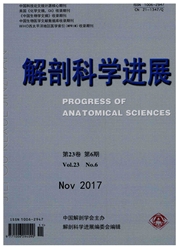

 中文摘要:
中文摘要:
目的探讨血清白细胞介素-6在神经胶质瘤患者预后中的潜在意义。方法收集手术前182位神经胶质瘤病人和49位正常供血者的血清样本。使用酶联免疫吸附试验测定白细胞介素-6水平。与血清癌胚抗原(CEA)、甲胎球蛋白(AFP)和C-反应蛋白(CRP)水平比较,评估白介素-6的临床意义。结果神经胶质瘤患者血清白介素-6水平明显高于健康对照组。血清白介素-6水平与癌胚抗原密切相关,但是与AFP和CRP关系不大。患者血清IL-6水平与患者TNM分期显著相关。此外,高血清的IL-6水平与神经胶质瘤的不良预后相关联。结论血清IL-6是神经胶质瘤的预后因子。
 英文摘要:
英文摘要:
Objective To study the prognosis significance of interleukin-6 (IL-6) level in serum of glioma patients.Methods Preoperative serum samples from 182 patients with glioma and 49 normal healthy volunteers were used to determine IL-6 levels by enzyme-linked immunosorbent assay (ELISA).The clinical significance of serum IL-6 levels was evaluated and compared with serum carcinoembryonic antigen (CEA) levels,alpha-fetoglobulin (AFP) and serum C-reactive protein (CRP) levels in these patients.Results The serum level of IL-6 was significantly higher in glioma patients than in healthy subjects,and strongly correlated with CEA levels,but not with AFP or CRP levels.Strong positive correlations were observed between serum IL-6 levels and tumor TNM stage.Furthermore,high serum IL-6 levels were associated with a worse prognosis in the glioma patients.Conclusion Serum IL-6 may be a prognosis factor for glioma progression.
 同期刊论文项目
同期刊论文项目
 同项目期刊论文
同项目期刊论文
 An Intronic Polymorphism in GRP78 Improves Chemotherapeutic Prediction in Non-small Cell Lung Cancer
An Intronic Polymorphism in GRP78 Improves Chemotherapeutic Prediction in Non-small Cell Lung Cancer No association between the haplotypic block in the 3' UTR of GRP78 and risk of hepatocellular carcin
No association between the haplotypic block in the 3' UTR of GRP78 and risk of hepatocellular carcin 期刊信息
期刊信息
